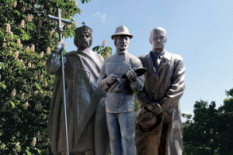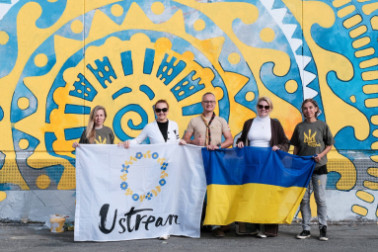In the Scandinavian sagas, Elizabeth is referred to as Elisiv. From there, historians have gathered information about the ancient Kyivan princess, whose hand and heart were ardently pursued by the future King of Norway, Harold, later known as Hardrada. After his death, according to one hypothesis, Elizabeth remarried and became the Queen of Denmark.
 The Path to the Norwegian Throne
The Path to the Norwegian Throne
It is no wonder that Yaroslav the Wise, the Great Rus' Prince and father of Elizabeth, was called the father-in-law of Europe. Among his successful diplomatic approaches that contributed to strengthening Rus' on the international stage was the skill of arranging advantageous marriages for his children with representatives of European royal dynasties.
At the time of his proposal to Elizabeth, Harold had little chance of becoming her husband. He was an exile from his homeland with bleak prospects for the throne. The reason lay in that his stepbrother, King Olaf the Stout (or Saint), had been killed, as he had baptized Norway with fire and sword, causing widespread discontent in the country. Wounded in the same battle, Harold fled. Later, he found himself in the service of Yaroslav the Wise, whose wife, Ingegerd, was the second cousin of the future King of Norway.
Norman sagas testify that Harold, despite his young age (some sources indicate he was only 16 years old), was a brave commander and a talented poet. However, he "had no realm to rule" and "wealth to ransom a bride," thus Yaroslav did not allow Elizabeth to marry.
To win the hand of the princess, Harold embarked on a journey to Constantinople and entered the service of the emperor, where he gained both fame and wealth. Longing for his beloved, young Harold composed 16 ballads known as "Harold's Stanzas in Honor of Elizabeth Yaroslavna." Each verse describing the adventures and achievements of the renowned knight ended with the line: "But the girl from the Russian land, Who shines in a crown, Does not accept me..." (translation by I. Franko).
Harold's poetic talent and love captured Elizabeth's heart, and the accomplishments and triumphs of the brave knight persuaded her father that he was a worthy match for his daughter. Thus, in the year 1044, the marriage between Harold and Elizabeth was solemnized.
The saga of Harold includes lines from a song by the Icelandic skald Stuva the Blind, dedicated to Harold:
"The warrior king Egda took for himself the wife he wanted. He received much gold and the daughter of the king."
Soon, Harold became involved in the struggle for the Norwegian throne. Through successful military alliances and the support of his warriors, he eventually became the King of Norway, reigning for twenty years.
 Queen of Norway and the Queen’s Mother
Queen of Norway and the Queen’s Mother
Beautiful Elisiv, enlightened and strong-willed, had all the chances to become a significant figure in the history of gloomy Scandinavia. However, there are few mentions of her. One reason is that Harold ardently sought her hand and heart upon returning to his homeland in 1048 and took a second wife who bore him two sons.
In that era, women's figures, even queens, often remained in the shadows of their husbands. Therefore, we know very little about most of them.
There is a version that, as a Christian, Elizabeth couldn't reconcile herself with her husband's actions and moved to a monastery, where she transcribed chronicles and educated children until her husband's death.
He perished in 1066 in the battle against the English at Stamford Bridge. Sagas tell us that on the same day and time this happened, their daughter Maria from Elisiv also passed away.
What happened next is truly unknown. However, historians lean towards the version that in 1067, Elisiv remarried for the second time. Her chosen one was Danish King Sweyn II Estridsson, and subsequently, the Kyiv princess received her second crown - the Danish one. It's noteworthy that it was with Sweyn II that her first husband - Harold Hardrada - waged a long war, trying to seize the throne of Denmark. However, he never became the king of that country; his widow became the queen instead.
 Continuation of the Story
Continuation of the Story
Daughter of Elizabeth, Ingegerd, married Danish Prince Olaf, the son of that same King Sweyn II Estridsson, presumably her mother's husband.
While there might be doubts about Elisiv's marriage, there is more information regarding Ingegerd. She did indeed become the queen of Denmark. And after the Danish throne, the Swedish one awaited her, as after Olaf died in 1095, Ingegerd married Swedish Prince Philip, who became the King of Sweden within ten years. Thus, the granddaughter of Yaroslav the Wise had two crowns.
Like many stories of remarkable Ukrainians, Elizabeth's story helps us all better understand the ancient connections between Ukraine and Europe and remember the times when Kyiv and the territories it united were part of a great European community.ld includes lines from a song by the Icelandic skald Stuva the Blind, dedicated to Harold:
"The warrior king Egda took for himself the wife he wanted. He received much gold and the daughter of the king."
Soon, Harold became involved in the struggle for the Norwegian throne. Through successful military alliances and the support of his warriors, he eventually became the King of Norway, reigning for twenty years.







